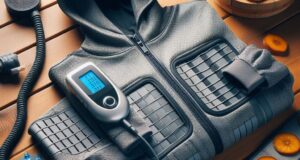Imagine trying to build a house using only bricks—no cement, no wood, no wiring—just bricks, piled one over another, day after day. It might look strong at first glance, but without balance, it’s bound to collapse.
Among the rising tide of drastic weight loss methods, this one has carved a place of its own. It promises rapid fat burning, lean muscle preservation, and hunger control—all by flooding the body with protein and cutting out almost everything else. But while it may deliver quick numbers on the scale, the internal toll it takes is often hidden beneath the surface.

The Premise – Fueling the Furnace with Pure Protein
The logic is deceptively simple: eliminate carbs and fats, and eat only protein—lean meats, egg whites, protein shakes, and maybe some low-fat cheese. The body, deprived of its primary energy sources, enters a state where it’s forced to burn fat for fuel. This is known as ketosis, and it’s the backbone of many low-carb diets.
But unlike balanced keto plans that include healthy fats, the protein-only crash diet takes things to the extreme. It turns your plate into a monochrome landscape of grilled chicken, boiled eggs, and powdery shakes.
It’s not eating. It’s engineering.
Why It “Works” – The Rapid Drop That Hooks You In
In the early days of the diet, the scale moves fast. Carbohydrates are stored in the body with water—so when you cut carbs, water weight disappears almost overnight. You feel lighter, tighter, and even slightly euphoric from the metabolic shift.
Meanwhile, protein is known to suppress appetite and boost satiety. This helps reduce overall calorie intake without the same hunger pangs that come from pure calorie restriction. Combined with a calorie deficit, fat burning ignites.
For those chasing immediate results, it feels like a miracle. And that’s exactly why this diet has earned its spot among drastic weight loss methods—fast, aggressive, and highly noticeable.

The Dark Side – When Fat Loss Isn’t the Only Loss
What the Instagram stories don’t show is the metabolic cost. By eliminating fats, you strip your body of essential fatty acids—key components for hormone production, brain health, and skin vitality. Without carbs, energy tanks. You might lose fat, yes—but also focus, patience, and strength.
That means your precious muscle tissue—the very thing you’re trying to protect—can start breaking down for energy. The body, without a balanced fuel mix, cannibalizes itself.
This isn’t transformation. It’s depletion.
The Mental and Social Fallout
Living on only protein is not just physically exhausting—it’s emotionally isolating. Social meals become awkward, variety vanishes, and food loses its joy. You begin to fear “forbidden” foods like fruits, grains, or even healthy fats like avocado and olive oil.
Anxiety over food choices grows. Every meal becomes a calculation. Slowly, the mind slips into a rigid mindset that borders on obsession.
Among drastic weight loss methods, this one often masquerades as “discipline” when it’s really disguised distress.
The Bounce-Back Effect – Weight Regained, Health Derailed
As with many crash diets, the moment normal eating resumes, the weight tends to return—sometimes with added fat due to slowed metabolism and muscle loss. The body, having been starved of balance, clings to every calorie it gets. What began as rapid progress ends in a frustrating rebound.
This is the cruel cycle of crash diets: fast fall, faster recovery—only not in the way you want.
More Than Just Macros
The protein-only crash diet is a tempting tool in the toolkit of drastic weight loss methods. It’s quick, calculated, and commanding. But it’s also narrow, unforgiving, and unsustainable.
True health is not built on exclusion—it’s built on harmony. Protein is essential, yes. But so are fats, carbs, vitamins, and joy. Don’t build your body like a house of bricks with no mortar. Build it with balance.
Because in the end, it’s not just about losing weight—it’s about not losing yourself in the process.




